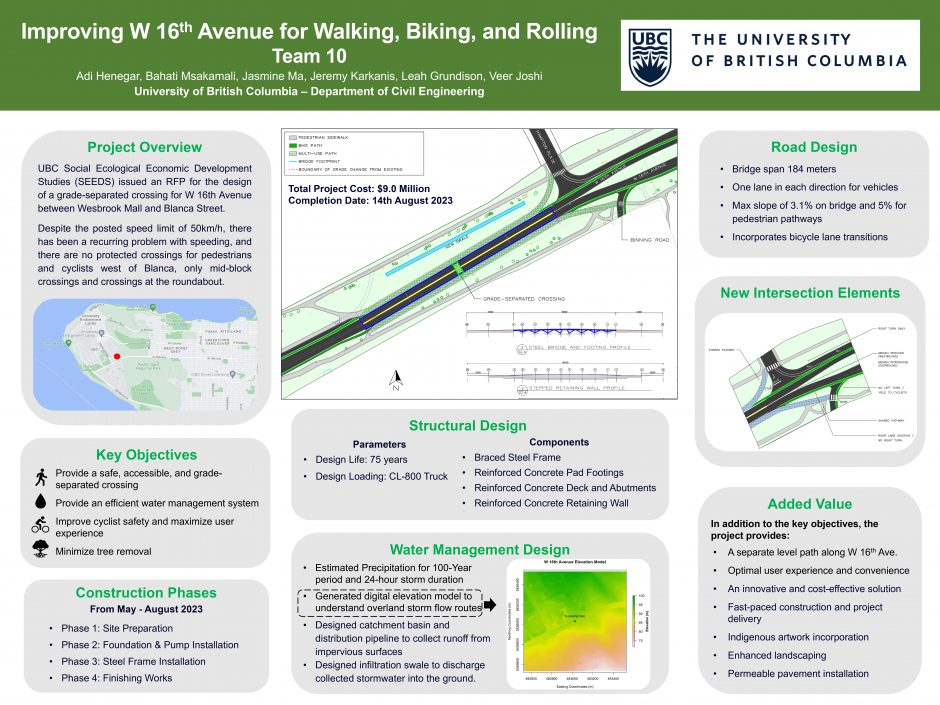On Design and Innovation Day in April, the project titled “Improving 16th Avenue for Walking, Biking and Rolling” by Team 10 from CIVL 446 was selected as the winner of the project poster category among several amazing projects by civil engineering students.
Team 10, consisting of Adi Henegar, Bahati Msakamali, Jasmine Ma, Jeremy Karkanis, Leah Grundison and Veer Joshi, designed a steel bridge structure that raises W 16th Avenue above a dedicated multimodal crossing path, ensuring user safety by eliminating risk of collision and enhancing traffic flow. The grade-separated crossing design ensures user safety by eliminating risk of collision between vehicles and pedestrians and enhances traffic flow by allowing vehicles to pass the crossing location without the need for stopping.

The intersection of W 16th Avenue and Hampton Place/Binning Road currently has an unprotected pedestrian crossing. Large volumes of people cross W 16th avenue at this location, including vulnerable road users such as many children on their way to and from Norma Rose Point Elementary School. There are significant concerns for the safety of those crossing at this location, especially since there has been a recurring problem with speeding on W 16th Avenue. Their industry partner, UBC SEEDS has asked for the implementation of a grade-separated crossing to address these concerns.
“Design details are chosen with the end users in mind. This is particularly impactful for this project because we as designers are also students of UBC, which provides a unique opportunity to imagine how we might interact with our design if it were ever built,” said the team.
While this project is well-defined, it also offers ample space for the exploration and implementation of creative solutions. The team, consisting of members with a keen interest in transportation disciplines and various other components, devised a design that incorporated a range of innovative features. These included stormwater management strategies, enhanced traffic signage, and the utilization of prefabricated components, effectively reducing the construction duration to a mere four months. The efficient timeline allowed for completion during the summer term when traffic volumes tend to be lower, minimizing disruptions to campus activities.
While there is no future development currently planned for this project, concerns for the safety of pedestrians, cyclists and other crossers at this location remains prevalent.
“We hope that one day a design like ours may be implemented by UBC and the Ministry of Transportation and Infrastructure. It would be great to see some of the ideas we worked hard to design in action to make our campus a better place,” said the team.
